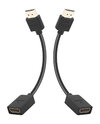The auto industry is racing towards a future full of micro-transactions...
@DAP gave us detailed information on Tesla's subscriptions earlier, so I looked up all the subscription features that BMW offers and analyzed them below:
Connect your BMW to the rest of the world with BMW ConnectedDrive services. Discover all digital services in the BMW ConnectedDrive Store.

www.bmw.co.uk
Active Cruise Control with Stop & Go function: This is essentially "Basic Cruise Control" behind a subscription paywall. Almost every car from Toyota, Honda, and Mazda has this feature for free. I can't imaging paying £750 for the privilege for something that comes standard in a Toyota Corolla or a Honda Civic.
Adaptive M Suspension: Lol...£399 for this? This thing sounds like pure profit. All I see are a bunch of buzzwords like adapts, comfort, and overly broad generalizations. At least they admit that the hardware for this is already on the car. They're making this thing sound like some magical Google/Tesla AI or cloud computing thing when it is not.
Apple CarPlay Preparation: They charge for this? "May only be available with additional optional equipment"...So in addition to this £265 subscription fee, you still have to pay for an additional "optional" equipment for this feature that you already paid £265 for it to work? The optional equipment maybe something as simple as them installing a USB or lightning cable in your car. I would assume labor and installation fees are not included as well? Given the fact that all BMWs already ship with Wireless Android Auto, this sounds like a subscription scheme that they developed to pick the pocket of Apple iPhone users who might not know any better.
BMW Drive Recorder: Waste of money like I pointed out earlier in this thread based on it's features. For that £199 subscription price, I can get a better dashcam from Viofo with better features.
BMW Safety camera: Waste of money. Waze and Google are crowd-sourced and therefore will always have more updated and accurate information of both fixed
and mobile enforcement cameras for free instead of wasting £25. They should reassign those engineers to work elsewhere.
Driving Assistant Plus: This is essentially "Adaptive Cruise Control" with ADAS/braking/lane keeping assist behind a subscription paywall. Almost every car from Toyota, Honda, and Mazda has this feature for free. I can't imaging paying £750 for the privilege for something that comes standard in a Toyota Corolla or a Honda Civic. So yeah, you will pay £750 for this and also £750 Active Cruise Control with Stop & Go function above for a total of £1500.
Front seat heating: I think everyone here already agrees on how stupid this is...£15/month or £350 for an "unlimited" subscription.
High beam assistant: I can't imaging why I should pay £10/month or £200 for an "unlimited" subscription for the privilege for my car's headlights to not blind incoming drivers due to it's automatic high beams. This feature is also standard in a Toyota Corolla and Honda Civic.
Iconic sounds sport: £99...Don't see any value here personally...but they are free to charge whatever for their work. Just like there are people that will buy emoticon packs, icon packs, and stickers.
Map update package: Meh...Google is the best mapping company on the planet and I can easily download offline maps if I want. BMW's subscription is £79/year with a promise of "up to 4" updates in a year with the keyword being "up to". It's hard for me to imagine that BMW would ever have a better map than Google.
Online Entertainment voucher: £179/year...limited to only 10 EU countries? Just pay for a YouTube Premium/Music, Spotify, or Apple Music subscription for the same price or less...and you won't be limited to only 10 EU countries either.
Service Inclusive: I personally would never pay £895.81 for a 5 year service plan for any car, but it might give certain people that don't want to spend time looking for reputable independent shops peace of mind having their car serviced at a dealer?
Heated Steering Wheel: Really??? Same deal with heated seats. £10/month or £200 for an "unlimited" subscription. I did not even know that they also charged for this until I saw it in this link.
These connected services are marching towards becoming the next profit centre...
Total cost of above options: £4,390.81
I discussed this with someone I know that also does not drive a BMW and his opinion was: "
Well...if you are getting a BMW, then you should be able to afford these things".
I'm sure BMW also thinks the same of their users which is why they are charging what they are charging.



